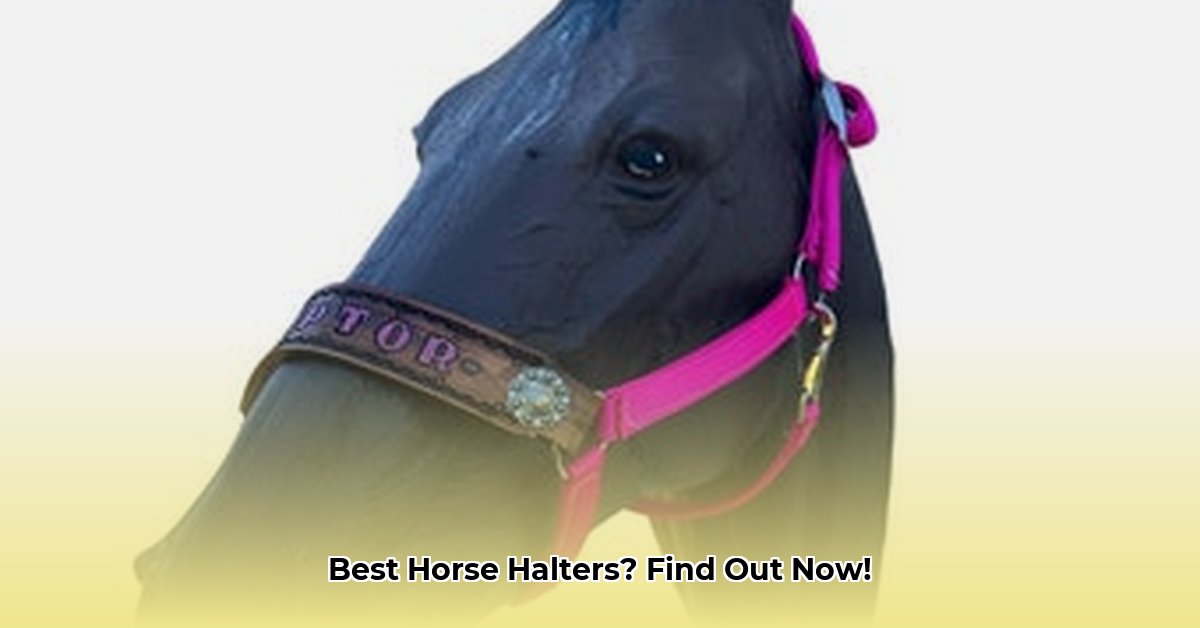
Choosing the right halter for your horse can be surprisingly complex. This guide simplifies the process, focusing on Tractor Supply's offerings and providing expert advice to ensure you select a halter that's both comfortable and safe for your equine partner. We'll explore different halter types, discuss proper fitting techniques, and offer insights into choosing the ideal halter based on your horse's breed, discipline, and individual needs. For more options, check out Tractor Supply's selection.
Understanding Halter Types and Materials
Before diving into specific Tractor Supply brands, let's clarify the different types of halters and their respective advantages and disadvantages. The right choice depends heavily on your horse's needs and your intended use.
Nylon Halters: Everyday Dependability
Nylon halters are widely popular due to their affordability, lightweight nature, and ease of cleaning. They are a practical choice for everyday use and come in various colors. However, they may not be as durable as leather and can potentially chafe if not fitted correctly. Always check for signs of wear and tear regularly.
Leather Halters: Classic Comfort and Durability
Leather halters offer a more traditional look and feel. Many horse owners appreciate their supple nature and increased comfort for prolonged wear. Leather halters are known for their longevity when properly maintained with regular cleaning and conditioning. The downside is the higher price point and the need for ongoing care.
Rope Halters: Specialized Training Tools
Rope halters are primarily used for specific training purposes. Their design allows for more precise control and the application of pressure points. However, they require expertise in equine behavior and training techniques. Improper use can be harmful, so it's crucial to seek guidance from a qualified professional if you're unfamiliar with rope halters. Never use a rope halter without proper training.
Choosing the Right Size and Fit: A Step-by-Step Guide
Proper fitting is paramount to ensure your horse's comfort and safety. A halter that's too tight can cause injury, while one that's too loose presents a significant safety risk. Follow these steps for a perfect fit:
Measure your horse's head: Measure the circumference of your horse's head at the widest part of the muzzle and around the poll (the area at the back of the head). Tractor Supply (and most other retailers) provide sizing charts to guide you.
Check the fit: The halter should fit snugly, but you should be able to slide two fingers comfortably between the halter and your horse's face. The noseband should rest comfortably above the nostrils, not restricting breathing.
Adjust the crown piece: Ensure the crown piece (the part encircling the poll) fits comfortably without pinching the ears.
Regular Inspection: Before each use, inspect the halter for any signs of wear and tear, including fraying, broken stitching, or weakened areas. Replace any damaged halter immediately.
Tractor Supply Halter Options: A Comparative Overview
While specific Tractor Supply models weren't provided in the source material, we can create a hypothetical comparison based on common halter types and features:
| Halter Type | Brand (Hypothetical) | Material | Pros | Cons | Price Range (USD) |
|---|---|---|---|---|---|
| Everyday Halter | Trail Rider | Nylon | Affordable, lightweight, easy to clean | Less durable than leather, potential for chafing | $10 - $20 |
| Heavy-Duty Halter | Dura-Pro | Heavy Nylon | Durable, strong, suitable for tough conditions | Can be stiffer, heavier than other nylon | $20 - $30 |
| Training Halter | Classic Comfort | Leather | Comfortable, durable, classic style | More expensive, requires maintenance | $30 - $50 |
Note: Prices are hypothetical and may vary depending on the specific model and retailer.
Key Takeaways: Choosing the Right Tractor Supply Halter
- Material Matters: Nylon halters offer affordability and ease of care, while leather provides superior comfort and durability. Rope halters serve a specialized training purpose and require expertise.
- Proper Fit is Crucial: A halter that's too tight or too loose can cause discomfort or injury. Always follow the fitting instructions and regularly check for wear and tear.
- Consider Your Needs: The best halter for your horse depends on factors such as breed, discipline, and temperament. Choose a halter that meets your horse’s specific needs and your budget.
Remember to always prioritize your horse's comfort and safety. If you're unsure about any aspect of halter selection or fitting, always consult a qualified equine professional.